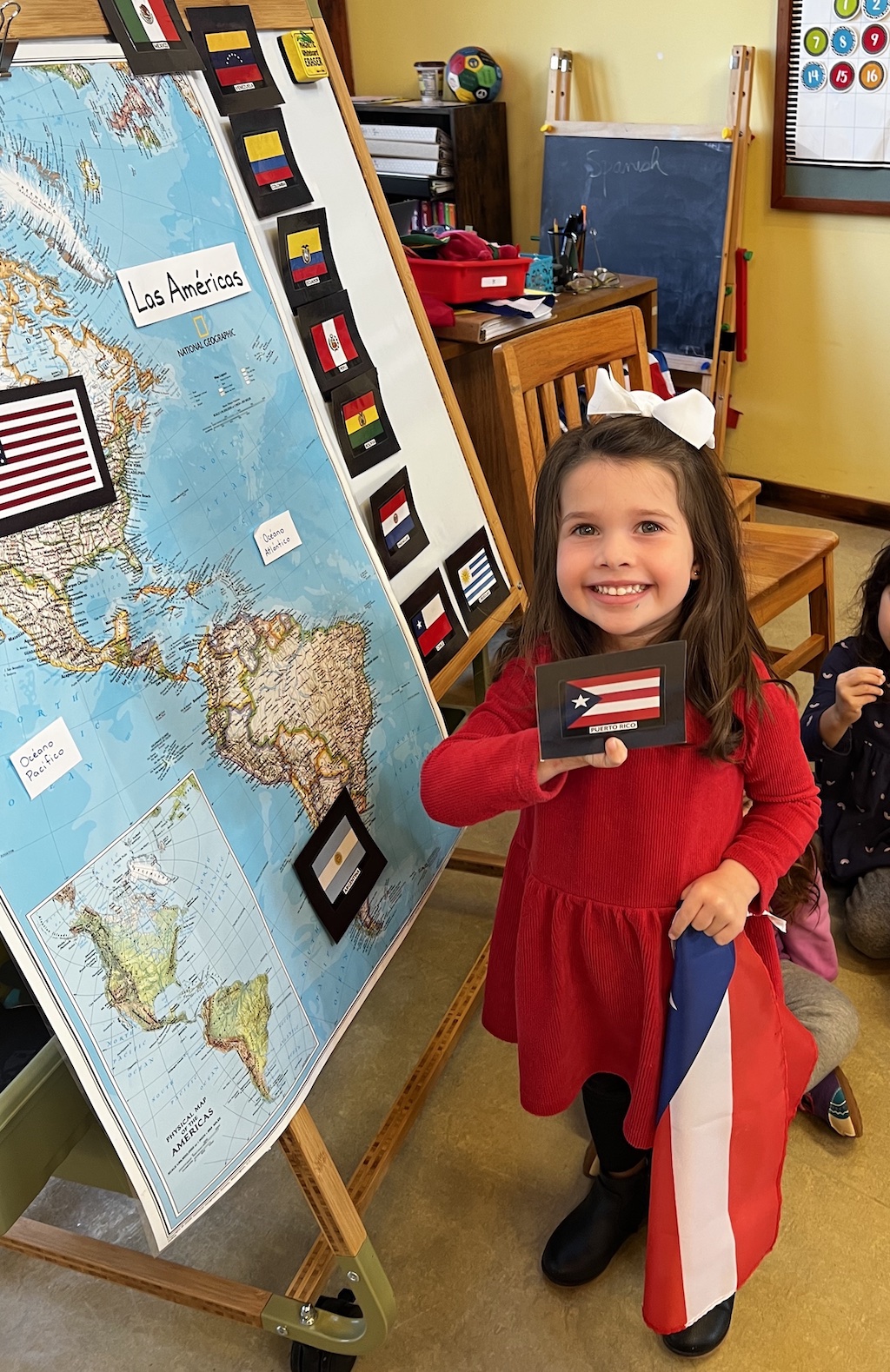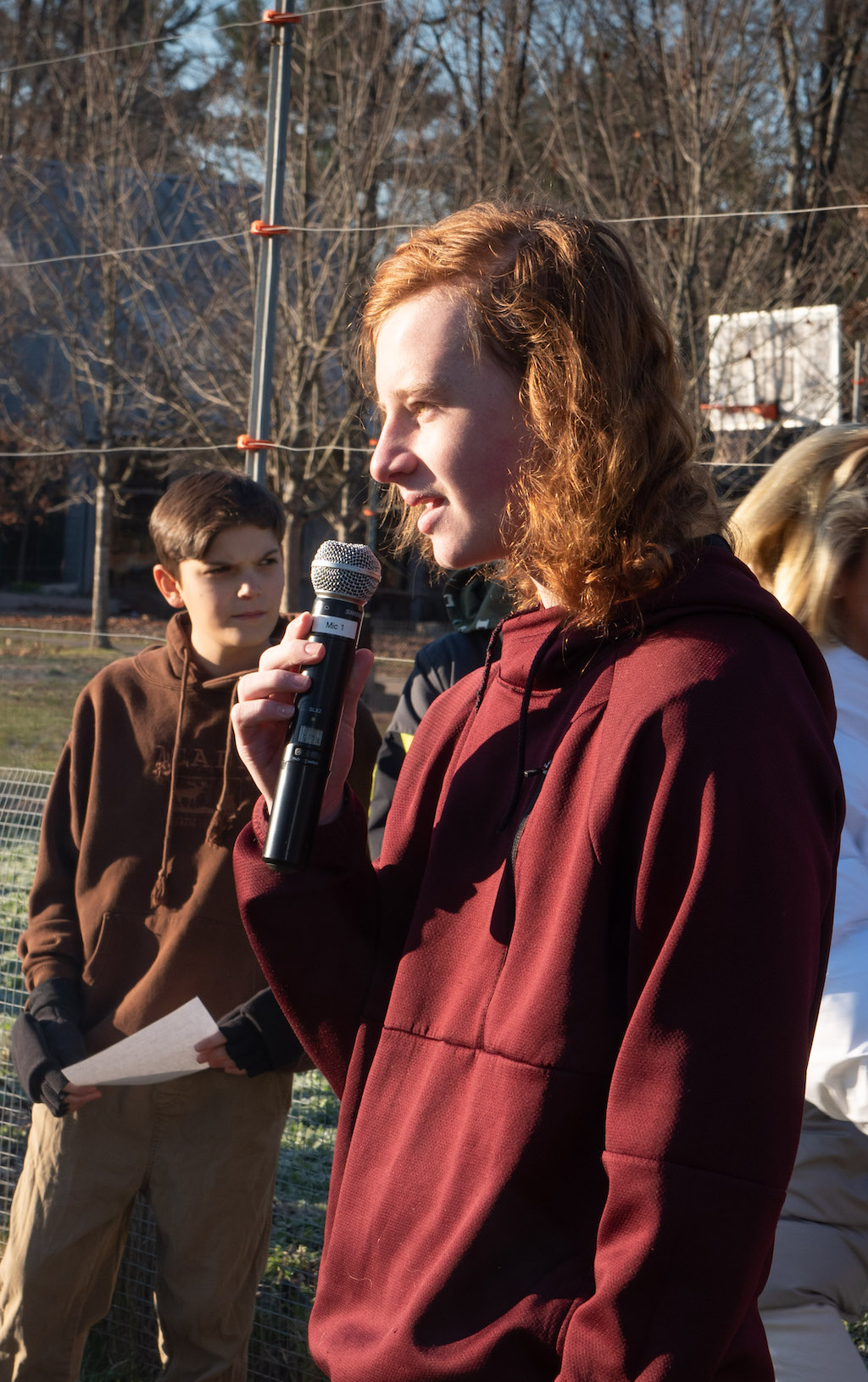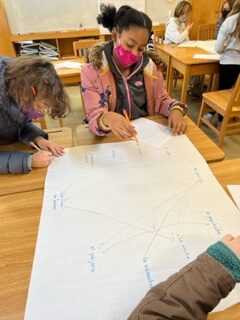Your child’s early school years are a critical time for learning in so many ways. At this age, they are curious explorers navigating a new world and figuring out how to interpret, interrogate, and share all of their findings. Language is a critical tool in this discovery. While it may seem overwhelming for young children to learn a second language as they are just beginning to understand their native tongue, this period of your child’s life is one of the best times they can learn another language.
Here are just five of the many ways your child will benefit from learning another language:

Preschoolers learn about Spanish-speaking countries in language classes.
1. Develops their flexible thinking and empathy
Researchers have been studying the cognitive advantages of early bilingualism for years. While research continues, many studies have shown that exposing a child to multiple languages helps children interpret their world in a deeply multidimensional, empathetic way.
For example, in a study published in January 2021 in Scientific Reports, researchers found a link between early bilingualism and the ability to shift attention visually and notice visual changes more quickly as an adult. A 2013 article in Learning Landscapes Journal demonstrated that bilingual children demonstrated more empathy than their peers, showing a greater understanding of others’ perspectives, thoughts, desires, and intentions and a greater ability to interpret tone of voice.
2. Helps children become global thinkers
It doesn’t take a neurological study to see that exposure to a different language helps children develop a deeper appreciation of our diverse world. Once children begin to learn a new language, they will see and hear it everywhere. They will experience the necessary humility that comes with learning someone else’s native speech and build their compassion for speakers new to their native language. Through the cultural education that comes with Willow’s World Language program, children start to understand the world. They become global citizens with a deeper cultural competence.

8th Graders share blessings in French and Spanish at Harvest Soup.
“The capacity to think in different modes and worldviews can offer human beings the freedom to let go of fixed ideas about one another, develop interest in and empathy for one another, and engage with the world with compassion,” writes Michelle Jarvis, a Waldorf language teacher mentor. (Fun fact: Willow’s French teacher, Catherine Luborksy, is Waldorf trained.)
Willow’s World Language program incorporates the virtues we imbue into all aspects of our program, including compassion and respect. For example, students create blessings for our Harvest Soup festivities that express gratitude in English, French, and Spanish. Through group discussions and student-led research projects, students learn about the many countries where French and Spanish are spoken. Students discuss the countries’ unique cultures and value systems to build understanding and self-reflection. Watch a virtual Cinco de Mayo Morning Gathering (recorded during the pandemic).
3. Builds communication confidence
Learning a second language is difficult. It requires a lot of trial and error and constant practice. Willow’s World Language program takes the pressure off of students to find the perfect word. Instead, Willow World Language teachers emphasize communication as the primary goal.
“We encourage students to try and use the words that they know to get their message across, rather than waiting to speak until they can find the right vocabulary,” says Willow Spanish teacher Maria Alonso. “Of course, we build their vocabulary and understanding of how to conjugate verbs over time, but the point is always to use the language, not just study it. Sometimes that will mean saying things in a different or even funny way, but when you think about how we use words in our native tongue, we are constantly decoding each other’s phrasing and word choice.” Maria uses these opportunities to encourage students to apply their knowledge, interpret each other, and build students’ communication confidence, in Spanish and beyond.

Students of all ages learn languages through play. Here, 2nd Graders sing and dance in French class.
“Thinking of language in this way is not just helping them in Spanish class,” she adds. “It’s helping them learn that they can communicate their ideas and overcome barriers like vocabulary because their classmates are willing to listen. They already have so many of the tools they need to express themselves. It’s empowering!”
This skill is sometimes referred to as “tolerance of ambiguity,” as in this article about the benefits of learning a language from the World Economic Forum. Such tolerance can help students become less anxious in social interactions outside of the classroom. It may also be linked to innovation and entrepreneurialism.
Willow World Language classes at all levels also use play, songs, games, and other fun teaching tools to encourage children to have fun with their language learning and apply what they know in different, more relaxed contexts. Middle schoolers also get the chance to practice their conversational skills with monthly language-based lunch tables.
4. Builds greater understanding of native language
Studying another language at any age naturally leads to comparing and contrasting your native language with the new lexicon. For children, this is a great opportunity to deepen their understanding of their native language. World Language teachers point out the similar roots between words in French, English, and Spanish, encouraging students to develop greater reading comprehension in both languages. It also reinforces students’ growing understanding of grammar and sentence structure.

Creating connections between languages.
“As we progress in our French lessons and start having conversations about conjugating verbs or prepositions, we sometimes discover that students may not know how to identify those parts of a sentence in their native English language,” says Catherine Luborksy, Willow’s French teacher. “It becomes an opportunity to tie back to their English lessons and reinforce some of the terminology and techniques they’re learning in other classrooms. These rules and terms may be something they rely on more in French or Spanish than in their native speech.”
5. Increases opportunities
As children grow up, the benefits of knowing multiple languages are immense. Children who learn second (or third) languages now will be better suited to take advantage of study abroad opportunities in college. They will have expanded career opportunities down the road. They will be primed to pick up even more languages, too, according to this 2017 study published in Cambridge University Press.
Learn more about Willow’s World Language Program
At The Willow School, World Languages are taught from preschool through eighth grade. Students in preschool to third grade spend a semester each on French and Spanish, drawing connections between all three languages as they learn. Our youngest students are introduced to world languages through songs, stories, games, music, and movement. As students grow, they build on their understanding through repetition, practice, and integration of new words, sounds, and structures. Students read books and work on group and individual projects. In third grade, students choose a language to concentrate in for the remainder of their time at Willow. In middle school French and Spanish, emphasis is put on more advanced written and oral comprehension through engaging activities like projects, plays, language lunch tables, and Morning Gathering presentations.
See our World Language curriculum in action: schedule a personal tour today! Reach out to our Director of Enrollment Management, Lisa VanderVeen, to start a conversation or book a tour online here.
Over the coming weeks, we will be sharing more information on Willow’s World Language program and the benefits of learning multiple languages. Read The Willow Blog for more!

